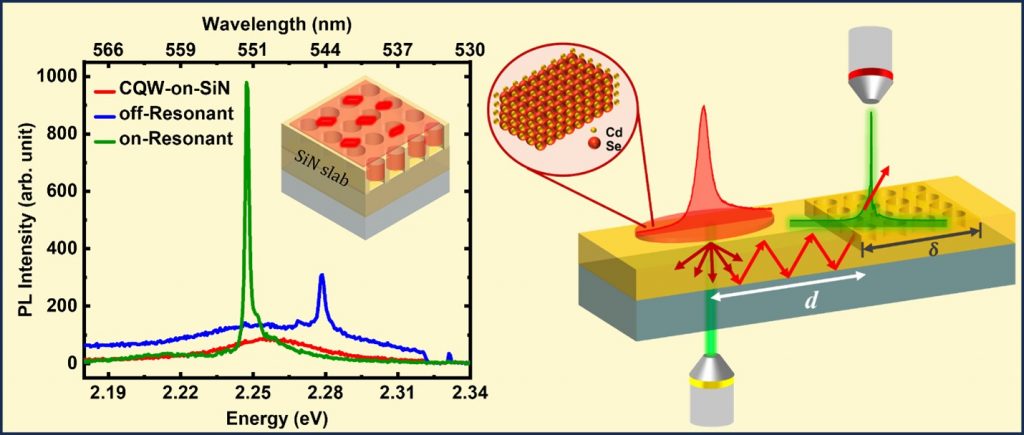Research Areas
2025
Unraveling Direct Correlations between Membrane Nanodomain Reorganization and Antimicrobial Resistance Evolution in Bacterial Cells

Antibiotics are essential for treating bacterial infections; however, their excessive and improper use has led to the rise of antimicrobial resistance. Generally, a key driver of this resistance is the exposure of bacteria to sub-lethal concentrations of antibiotics, which often enables them to develop resistance against the very drugs meant to eliminate them. Given that many antibiotics exert their effects by targeting the bacterial membrane-either directly or indirectly-it becomes crucial to understand how membrane structure and dynamics respond during this evolutionary process.
To explore this, we exposed live E. coli to progressively increasing concentrations of colistin, an antibiotic of last resort. Over a short period of time, the bacteria adapted to survive not only at the minimal inhibitory concentration but also beyond it. Gene expression analysis through RT-PCR revealed that resistance is accompanied by the upregulation of pmrAB and phoPQ, genes known to mediate modifications in lipopolysaccharides, thereby altering membrane characteristics.
To uncover the underlying membrane adaptations associated with this resistance, we employed super-resolution Stimulated Emission Depletion (STED) nanoscopy coupled with Fluorescence Correlation Spectroscopy (FCS). STED-FCS enabled us to probe the dynamics of lipid nanodomains on E. coli membranes during the course of AMR evolution, while high-resolution Atomic Force Microscopy provided complementary information on nanoscale morphological changes in the same population.
Our integrated approach revealed the onset of length scale–dependent dynamical changes in the membrane even at sub-MIC concentrations, suggesting that membrane reorganization is an early and adaptive response that facilitates survival at MIC. Furthermore, we detected signatures of cooperative lipid motion and dynamic heterogeneity in the membrane, quantified using the non-Gaussian parameter of lipid number fluctuations.
Together, these findings provide the first direct evidence linking nanoscale dynamical reorganization of Gram-negative bacterial membranes to the evolution of phenotypic resistance under sub-lethal exposure to colistin. By integrating RT-PCR, AFM, and STED-FCS measurements, we demonstrate how membrane remodeling serves as a key component of antibiotic resistance in E. coli.
For more information, see Parthasarathi, S., Chaudhury, A., Basu, J.K., Yadav, R. and Saini, D.K., 2025. Unraveling Direct Correlations between Membrane Nanodomain Reorganization and Antimicrobial Resistance Evolution in Bacterial Cells. PRX Life, 3(2), p.023017. https://doi.org/10.1103/4ksf-x7js
Harnessing Light for Advanced Quantum Technologies
What We Did
We’ve developed a method to enhance and purify light emission from 2D semiconductor colloidal quantum wells (CQWs) at room temperature. By integrating these tiny light sources with specially designed dielectric metasurface resonators (MSRs), we’ve created a system that emits pure light with high efficiency.
Key Findings
– The integration of CQWs with MSRs led to a significant enhancement and spectral purification of the light emitted by the CQWs.
– The significance of spectral overlap for efficient light-matter interaction was highlighted by demonstrating CQW coupling to MSRs with slightly de-tuned resonance responses.
– Spectrally narrowed emission was obtained in the guided in-plane direction too.
– We demonstrated that our setup can transport light over long distances on a chip, which is useful for creating on-chip light sources.
– Our experimental results were supported by theoretical and numerical models, explaining the data in terms of modified light-matter interactions (Lamb shifts and Purcell decays)
Why It Matters
Efficient and pure light sources are crucial for advancing technologies like quantum metrology and quantum cryptography, which have applications in secure communication and precise measurements. Our work could pave the way for new on-chip photonic devices that are faster and more reliable.
Reference: Room Temperature Emission Line Narrowing and Long-Range Photon Transport in Colloidal Quantum Wells Coupled to Metasurface Resonance, Advanced Optical Materials, https://doi.org/10.1002/adom.202400859

Spontaneous unbinding transition of nanoparticles adsorbing onto biomembranes: interplay of electrostatics and crowding
Cellular membranes are constantly bombarded with biomolecules and nanoscale particles, and cell functionality depends on the fraction of the bound/internalized entities. Understanding the bio-physical parameters underlying this complex process is very difficult in live cells. Model membranes provide an ideal platform to obtain insight into the minimal and essential parameters involved in determining cell membrane-nanoparticle (NP) interaction. Here we report spontaneous binding and unbinding of semiconductor NPs, carrying different net charges and interacting with model biomembranes, using in-situ neutron reflectivity (NR) and fluorescence microscopy studies. We observe a critical concentration of NPs above which they spontaneously unbind along with lipids from lipid monolayer membranes, leaving behind fewer bound NPs. This critical concentration varies depending on whether the NPs carry a net charge or are neutral, and is also governed by the extent of NP crowding for a fixed NP charge. The observations suggest a subtle interplay between electrostatics, membrane fluidity, and NP crowding effects which eventually determines the adsorbed concentration for unbinding transition. Our study provides valuable microscopic insight into the parameters that could determine the biophysical process underlying NP uptake & ejection by cells which, in turn, can be utilized for their potential application in bioimaging & drug delivery.



